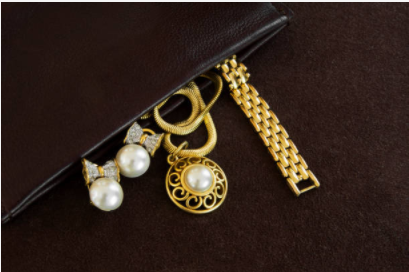INTRODUCTION In everyday life, we use so many products of different brands, inventions that are…
Protection Of Jewellery: An Overlap Between Copyright And Design Laws
Design Act protects a design that has been registered duly under the requisites of the Act whereas the Copyright Act protects artistic works. Design has been defined under section 2(d) of the Act which is stated to include shape, configuration, pattern, ornamentation, compositions of line and colours which have been applied to an article either in 2D or 3D form. The functional aspect of a product or their principal mode of construction are excluded from the purview of the definition. Artistic work has been defined under section 2(c) of the Copyright Act and it includes any work of artistic craftsmanship. This has also been left out from the horizon of the designs act. Certain case laws provide a brief idea concerning the distinction between the two concepts. There is a thin line of overlap which exists between design and copyright laws. Section 15 of the Copyright Act states that copyright shall not exist anymore in a particular design once it has been registered under the designs Act. On registration, the copyright in design is fortefied under section 10 of the Designs Act for a period of 10 years if not renewed. In cases of an unregistered design, copyright shall subsist to the extent of 50 applications.
[Image Source: gettyimage]
The concept of reproduction and adaptation also comes into question here. Reproduction has been stated under section 14(c)(i) of the Copyright Act whereby it has been defined as a material or artistic work bring produced into a 2D or 3D form. Adaptation on the other hand has been defined under section 2(a) of the Copyright Act whereby it is defined as ‘any use of such work involving its rearrangement or alteration’. Thus, in the case of jewellery, reproduction seems to be more applicable since jewellery is created in the exact manner in which it has been designed on paper. However, in certain situations adaptation can also take place where slight variations have been made into the design which makes it a little different from the drawing. Either adaptation or reproduction of the underlying work would be present as it would be protected under copyright law irrespective of the fact whether the design has been protected under design or copyright law. The High Court of Bombay in the case of Pranda Jewellery v Aarya 24k while dealing with a copyright infringement case pointed out that when copying of any painting is done on a paper or canvas it does not lead to the copying of shape and configuration and is considered to be the reproduction of the painting. However, in cases where certain features like shape and configuration are applied to articles, even though it has an artistic value it will fall within the purview of designs. The Court considered that even in the case of reproducing a drawing on a gold plate in a 3D form it would still be considered to be an artistic work because ‘what is produced is the artistic work itself’. In the case of Microfibers Inc. v Girdhar & Co, the intention of the legislature behind giving larger protection to artistic copyrighted work over design was discussed and it was held that since designs have a commercial value it was to be brought within the public domain in a lesser time. Thus, art and commerce were to be treated differently.
Thus, from the case laws, it can be seen that it is difficult to understand the path which a Court will take to decide whether a piece of jewellery will be considered an artistic work or a design. It can be suggested that a jeweller needs to decide the number of times he is going to apply the design. In case he decides to reproduce it more than 50 times then registration should be done under the Designs Act 2000 to get protection for a period of 15 years. However, if less than 50 applications of the design are to be made then copyright protection can be attained for the same.
Author: Shreya Das, a student of BA. LLB (H) of Amity Law School (Amity University), intern at IIPRD. In case of any queries please contact/write back to us at aishani@khuranaandkhurana.com.

